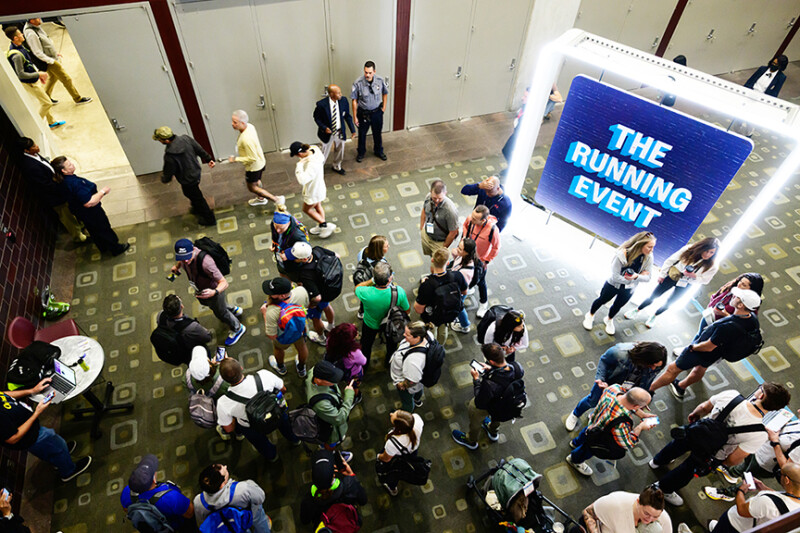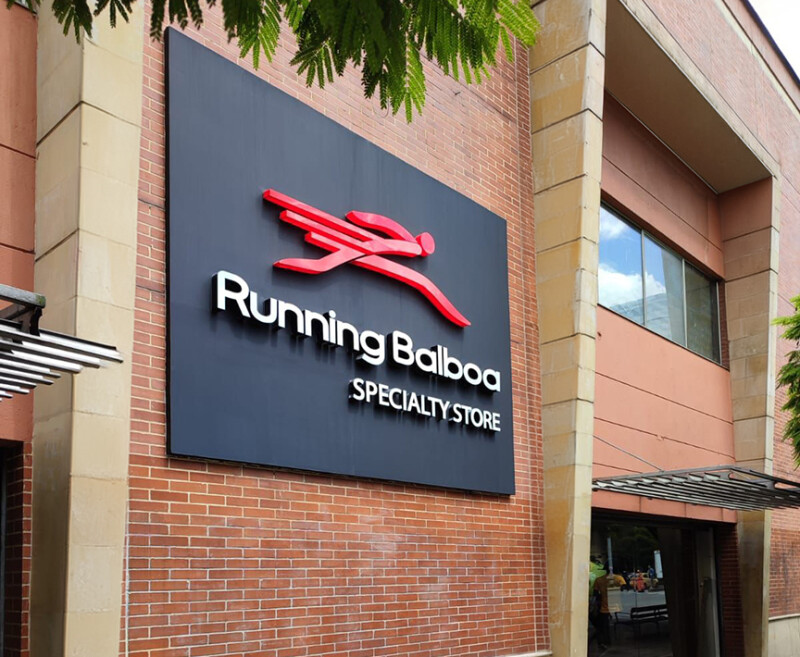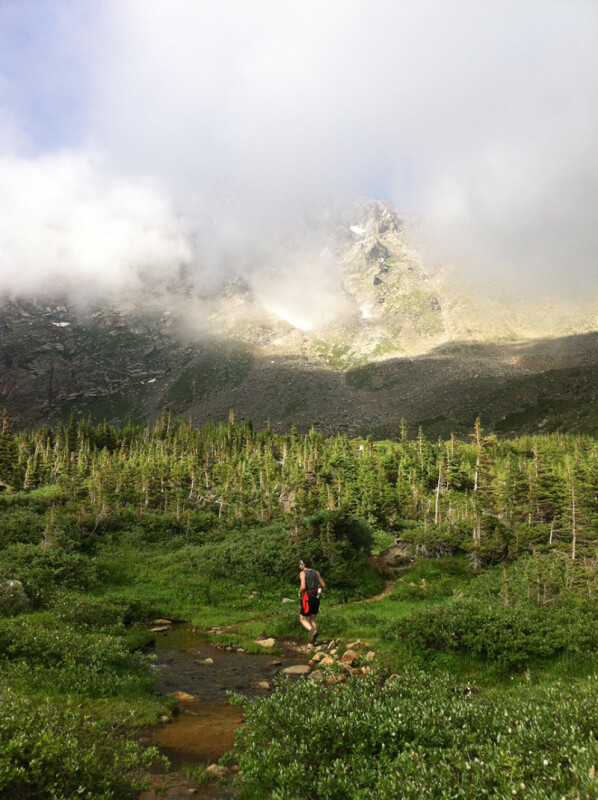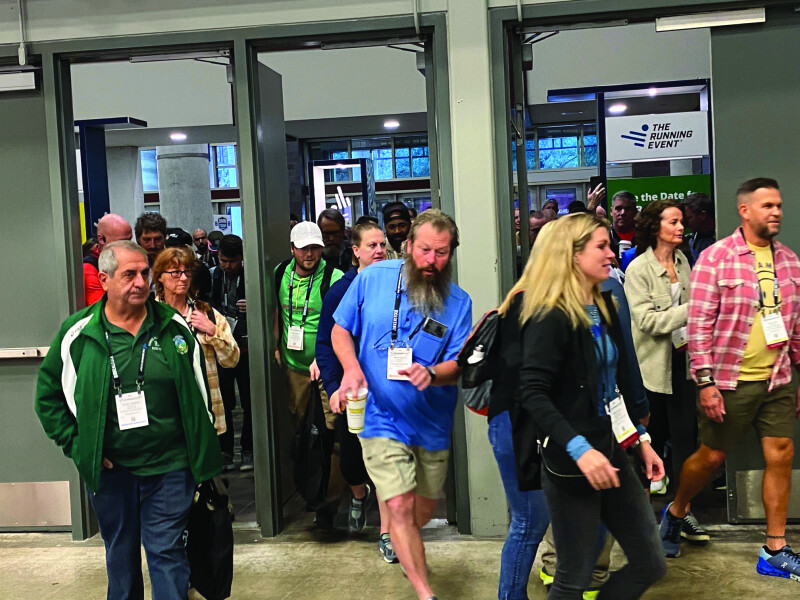The manager of Dick Pond Athletics in Park Ridge, IL, Chris Wilhite often spends August and September traveling to schools with the Dick Pond “shoemobile.” He will attend a high school cross-country invitational every Saturday from late August through early November. And his phone includes the numbers of nearly 250 local coaches, many of whom share perspective and information driving Wilhite’s work.
All this is to say Wilhite has a rich understanding of what’s resonating with the contemporary high school crowd. He notes trends and observes habits, calling today’s runners educated and sophisticated.
“They’re bigger nerds than ever, which I mean in the nicest way possible,” he says. “They absolutely know what’s coming out and available and want to know more.”
High schoolers’ surging awareness of running products and training as well as their commitment to general fashion trends are driving notable movements in the run specialty marketplace. Wilhite and other running retailers discuss what they’re seeing with today’s teens.
A greater willingness to experiment with footwear brands. Study the starting line at a high school cross-country invitational a decade ago and Dylan Dombi of Ohio-based Second Sole says you might see three footwear brands represented. Today, however, Dombi sees upwards of 10 brands on the feet of runners.
“More than ever, kids are willing to try new things and they’re finding a lot to experiment with because every brand is focused on youth and working to create a dynamic, fun sensation,” Dombi says.
One shoe, two shoes. More than ever, prep harriers understand the distinct use cases for different footwear – if not by a coach’s or teammate’s suggestion, then through personal experience.
“A lot of high schoolers enjoy the max cushioning shoe for a long run but realize it’s not the best when they start running 400s in the same shoe,” says Brendan Barrett, co-owner of Sayville Running Company and Smithtown Running Company in Long Island, NY.
For the more competitive and invested athletes or those who “define” themselves by the sport, Barrett sees a growing number purchasing two pairs of shoes, often a workhorse daily trainer and a faster speed shoe.
Other running retailers observe similar behavior.
Craig Segal, owner of The Outpost Running and Walking Co. in Little Silver, NJ, notices many athletes at nearby Christian Brothers Academy, one of the nation’s top-ranked boys’ programs, investing in a rotation of shoes for different use cases, from recovery to speed workouts.
Ditto at the 10-store Runners Roost chain in Colorado.
“They’re wanting a few pieces of footwear in their quiver,” Runners Roost owner Kent Wories says of the area’s most enthusiastic prep harriers.
And the same at Dick Pond, which operates five retail stores in suburban Chicago. Though Wilhite says not every athlete is purchasing two models for the season, it’s not an insignificant number, either.
“Parents understand it as well, which means they’re more willing to invest,” Wilhite adds.
Meanwhile, Second Sole, which has eight stores across northern Ohio, has tapped into this growing phenomenon by hosting in-store coaches’ clinics in which staff discuss how athletes can incorporate multiple pieces of footwear into their training regime.
The bang-for-the-buck trainer. Not every prep harrier, of course, is plunking down $300-400 for two trainers.
For those new to the sport, those with a strict budget or athletes who haven’t been hard bit by the cross-country bug just yet, there’s heavy interest in “bang-for-your-buck” training shoes. With models like the New Balance Rebel, the ASICS Novablast, the Mizuno Neo Zen and the Brooks Hyperion (photo left), athletes appreciate getting a lively, fast ride and season-long durability at a reasonably accessible price point.
Wories says the “energy” footwear silo is a good match for what intrigues the broader high school market, namely shoes that can work as well for an uptempo run and speed work as a 60-minute run.
The super shoe takeover. With the advent of super shoes, Wories has noticed a decline in waffle racer-type shoes and competition-specific spikes.
“In Colorado, we have a lot of firm surfaces for cross-country, including roads. Rather than going with the traditional waffle, we’re seeing more kids opt for racing in Vaporflys, Endorphin Pros and other plated shoes,” he says.
Wories acknowledges his observation is rather location-specific, but it supports a larger trend others have noticed – that is, youth embracing super shoes and, in some cases, multiple footwear models for a cross country or track season.
Best to ingest. The nutrition category at run shops has largely been the domain of adult customers, particularly those training for half and full marathons. As high schoolers’ knowledge about footwear has soared, so, too, has their awareness of nutrition climbed amid a more intense commitment to optimize their training.
They’re purchasing electrolyte drinks to help them power through a long run in the heat, inquiring about protein-packed recovery drinks and even grabbing an energy gel for a 10-mile run.
“Many of them know a bit already and are curious to learn more,” Barrett says of teens and nutrition. “They’re cognizant of, asking about and interacting with nutrition in a way they weren’t 5-10 years ago.”
Higher hosiery. In a surprising turn, at least for someone who grew up in the era of low-cut and no-show socks, Barrett notes the popularity of crew length and mini-crew socks amongst the high school crowd. He first observed it a few years back; now, though, the crew sock is ubiquitous.
And Barrett has a theory: “Whatever sock your dad wore at your age, wear the opposite.”
Fashion, it is said, is cyclical, so Barrett’s tongue-in-cheek speculation might not be far off.
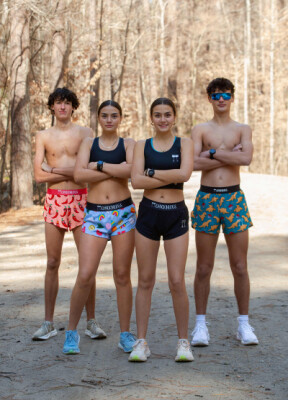
Wacky shorts and group buying. Once upon a time, Wilhite would sell trainers and spikes at cross-country invitationals, particularly early-season meets. Those product categories, however, don’t move like they once did at out-of-store venues.
But it’s a different story with fun accessories such as goodr sunglasses and quirky apparel ala ChicknLegs shorts. With ChicknLegs shorts, in particular, Wilhite says runners know about new releases and are hungry to grab new styles.
“Sometimes, it feels like I’m giving away Taylor Swift concert tickets when I pull out these shorts at a meet,” he says.
A thousand miles away in Colorado, Wories notes a similar phenomenon.
“We don’t sell a whole lot of ChicknLegs in our brick-and-mortar stores, but it’s a feeding frenzy-type dynamic when we go out to high school events,” he says.
.png.small.400x400.png)

